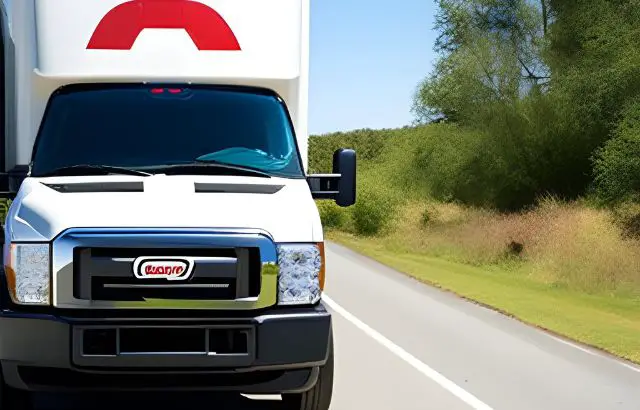Are you looking to decode the mysteries hidden within your vehicle’s VIN? So, can you look up RPO codes by VIN?? You can view the attributes specific to a VIN, such as Regular Production Option (RPO) codes, for the vehicle you’re fixing through the VIN Attributes feature. However, only those foreign VINs intended for the U.S. market will be shown.
How to Find RPO Codes using the VIN
While the VIN contains a wealth of information about your vehicle’s make, model, manufacturing location, and more, RPO codes are not typically included in the VIN itself. However, it’s possible to find them! You can use various methods to look up RPO codes based on your VIN.
One of the most straightforward ways to find RPO codes is by contacting the vehicle manufacturer directly. Many manufacturers have customer support lines or online portals where you can provide your VIN and request a detailed report that includes your vehicle’s RPO codes.
This method ensures accuracy and reliability, as the information is sourced directly from the manufacturer.
Another option is to use online databases and resources specializing in decoding VINs and retrieving RPO codes. These websites often provide free or paid services where you can input your VIN and receive a detailed report with all the relevant RPO codes associated with your vehicle.
Remember that the accuracy and comprehensiveness of these databases may vary, so it’s always a good idea to cross-reference the information with multiple sources.
If you prefer a more hands-on approach, you can also decode RPO codes manually by referring to official documentation, such as service manuals or technical guides specific to your vehicle’s make and model. These documents often include extensive lists of RPO codes and their corresponding meanings, allowing you to decode them step by step.
Common RPO Codes and their Significance
While RPO codes vary significantly between different vehicle brands and models, some common codes appear across multiple manufacturers. Let’s explore a few of these common RPO codes and their significance:
- RPO Code: A31 – This code represents the power windows option, indicating that the vehicle has electrically operated windows.
- RPO Code: G80 – This code signifies the presence of a limited-slip rear differential, which improves traction and handling, especially in challenging driving conditions.
- RPO Code: NPP – This code is often associated with performance exhaust systems, indicating that the vehicle has an upgraded exhaust system that enhances engine sound and performance.
- RPO Code: Z71 – This code is commonly found on trucks and SUVs and represents an off-road suspension package. Vehicles with this code have features like enhanced shock absorbers, skid plates, and all-terrain tires.
These are just a few examples of RPO codes’ wide range and significance. By knowing these codes, you can better understand your vehicle’s capabilities and features.
Resources for Finding RPO Codes by VIN
Several resources are available online if you’re looking to find RPO codes using your vehicle’s VIN. Here are a few trusted websites that specialize in decoding VINs and retrieving RPO codes:
- VinDecoderz.com: VinDecoderz.com offers a free VIN decoder tool that provides detailed information about a vehicle, including RPO codes.
- AutoCheck.com: AutoCheck.com is a comprehensive vehicle history report service that includes RPO codes as part of their reports. They offer both free and paid options.
- Carfax.com: Carfax.com is another popular website that provides vehicle history reports, including RPO codes, for a fee. Their reports include information about accidents, ownership history, and more.
These resources can be a valuable starting point in uncovering the RPO codes associated with your vehicle. However, it’s important to cross-reference the information with multiple sources to ensure accuracy and reliability.
Frequently Asked Questions
Are RPO codes unique to each vehicle?
Yes, RPO codes are unique to each vehicle and are assigned by the manufacturer during production.
Can RPO codes change over time?
In some cases, RPO codes can change between different model years or when a vehicle undergoes certain modifications or updates. It’s important to refer to the documentation or resources relevant to your vehicle’s make and model.
Can I add or modify RPO codes on my vehicle?
RPO codes are determined during manufacturing and cannot be added or modified after the fact. However, you can customize your vehicle by adding aftermarket options or accessories.
Do all manufacturers provide RPO codes for their vehicles?
While most manufacturers provide RPO codes for their vehicles, the availability of this information can vary. It’s best to check with the manufacturer or use online resources dedicated to decoding VINs.
My Opinion
Unlocking the secrets of your vehicle’s RPO codes can provide valuable insights into its specifications, features, and options. While RPO codes are not typically included in the VIN itself, they can be accessed using various methods, such as contacting the manufacturer, using online databases, or referring to official documentation.
Knowing your vehicle’s RPO codes enables you to make informed decisions regarding maintenance, repairs, buying, or selling. Whether you’re a car enthusiast, mechanic, or curious owner, understanding RPO codes adds another layer of knowledge to your automotive journey. So, don’t hesitate to explore the world of RPO codes and discover the hidden gems within your VIN!































